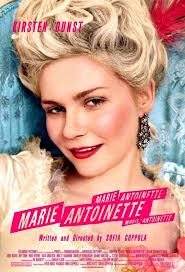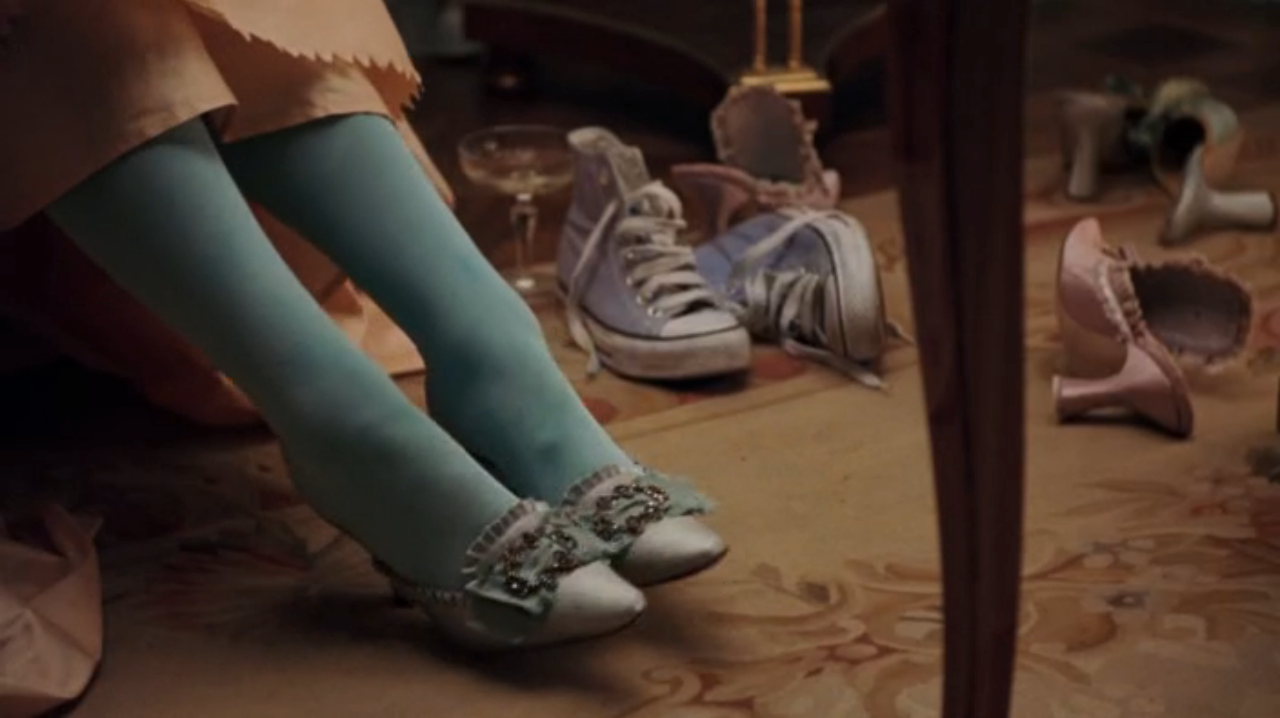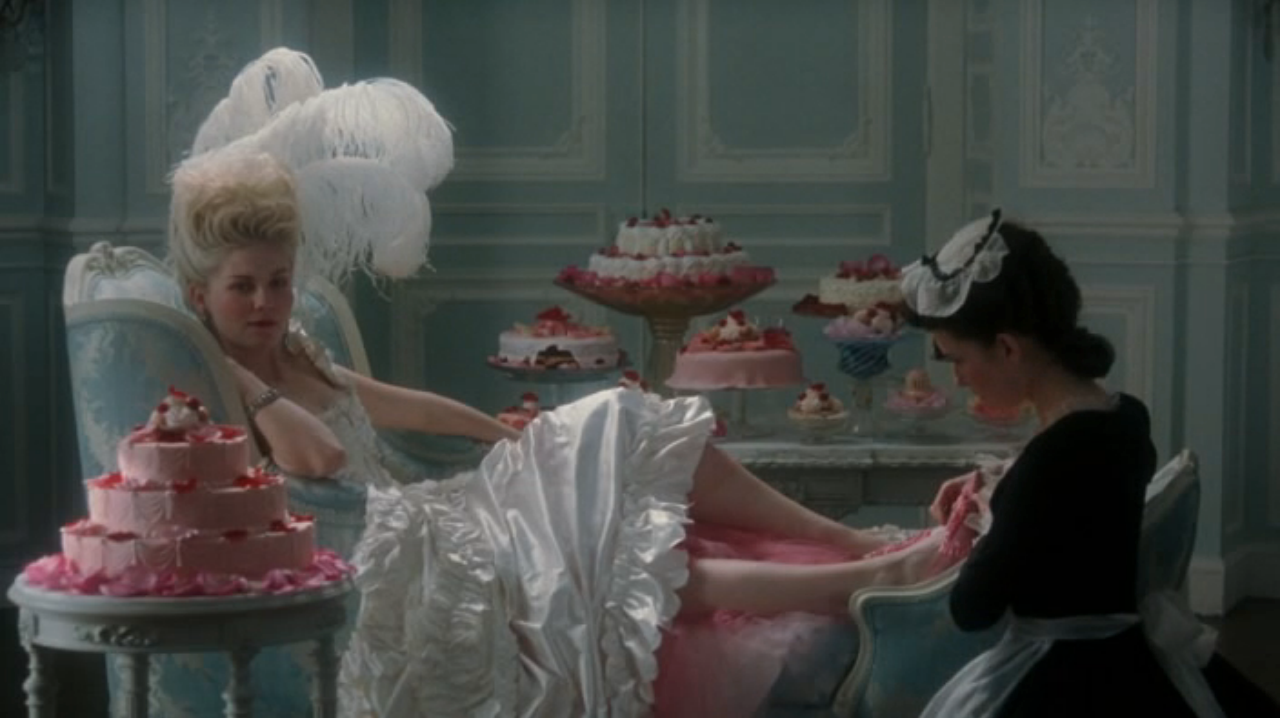 Who knew a period piece about Marie Antoinette would be Sofia Coppola's most controversial movie? Basically, whether or not you like Coppola's 2006 Marie Antoinette boils down to how you feel about anachronisms. Anachronistic details - modern fashion in a period piece, pop music played at a ball, a much-maligned pair of lavender Converse sneakers - are by design attention-grabbing. Like equally flamboyant directors Baz Luhrman and Quentin Tarantino, Sofia Coppola’s purpose is to jar audiences in the present, setting up a stylized world where (hopefully) audiences can relate more closely to people who lived decades or centuries ago. Coppola uses anachronisms to help the audience appreciate the rebellious streak of Marie Antoinette’s hedonism.
Who knew a period piece about Marie Antoinette would be Sofia Coppola's most controversial movie? Basically, whether or not you like Coppola's 2006 Marie Antoinette boils down to how you feel about anachronisms. Anachronistic details - modern fashion in a period piece, pop music played at a ball, a much-maligned pair of lavender Converse sneakers - are by design attention-grabbing. Like equally flamboyant directors Baz Luhrman and Quentin Tarantino, Sofia Coppola’s purpose is to jar audiences in the present, setting up a stylized world where (hopefully) audiences can relate more closely to people who lived decades or centuries ago. Coppola uses anachronisms to help the audience appreciate the rebellious streak of Marie Antoinette’s hedonism.
Surprisingly, the first half of the film plays along the standard genre rules of the period piece. 14-year-old Marie (Kirsten Dunst) is introduced as a child playing with puppies, stripped - literally - of her Austrian possessions at the border of Austria and France, and quickly married to the equally immature Dauphin Louis (Jason Schwartzman). Coppola’s ability to make the foreign both exciting and isolating is powerfully used during these early scenes. The lavishness of the receiving tent turns claustrophobic when Marie is forced to disrobe for examination by a cold courtier. Likewise, the beautiful bustle of Versailles’s court becomes ridiculous and invasive. In a cringe-inducing scene, Marie is left standing naked as the same courtier explains that dressing involves half the court and a lot of ceremony. After she is publicly shamed for failing to produce an heir (the Dauphin has intimacy issues), the contradiction of Marie’s life as a monarch is clear: she has no privacy, but she is alone.
Under such heavy scrutiny, it’s no wonder Marie rebels...
The first few montages buzz with pop punk energy, as Marie overindulges in food and fashion to a cover of “I Want Candy” by the Bow Wow Wows. Coppola is visually fascinated by shoes, gowns, wigs, and various material manifestations of Marie’s decadent disobedience. At times, bright colors and quick cutting make it feel like a music video. (Nothing so much as Madonna’s 1990 MTV Music Awards performance of “Vogue” springs to mind. I’m honestly surprised Madonna wasn’t included.)
It’s an unsteady balance to set consumption as mutiny, but at first Coppola succeeds. Eventually, however, the obsessive documentation of Marie’s mounting possessions stops being rebellious and starts being excessive. Marie’s loneliness, so sadly captured in the first half of the film, is rarely addressed again, though the film speeds through a series of plot points - new friends (Rose Byrne), an affair with a Swedish soldier (beardless Jamie Dornan), and children - on its way to Antoinette’s inevitable end. The movie hints that motherhood may have lessened the void, but for the sake of forward momentum, her kids grow from babies to children in a matter of minutes. The movie continues to have moments of power, but loses the character-driven coherence of the first half.

Sofia Coppola has a peculiar talent for presenting loneliness onscreen. Her films explore people cut off from society even as they live in it. There may be no better director at showing how easy it is to feel lost in a crowd. She uses small details to hint at inner lives - bible cards, paper lamps, designer shoes. Her characters fill their lives with things in the absence of connections. Just where this obsession with documenting the material refuse of loneliness originates may be explained in her next film, when she turns the camera on herself.
